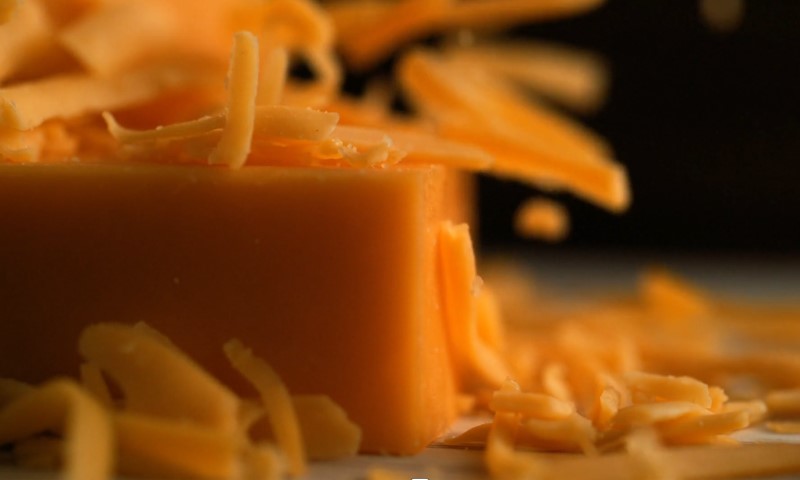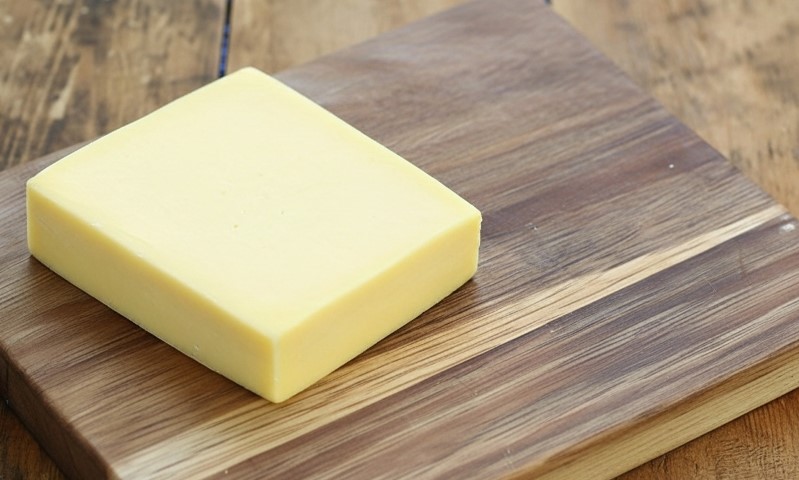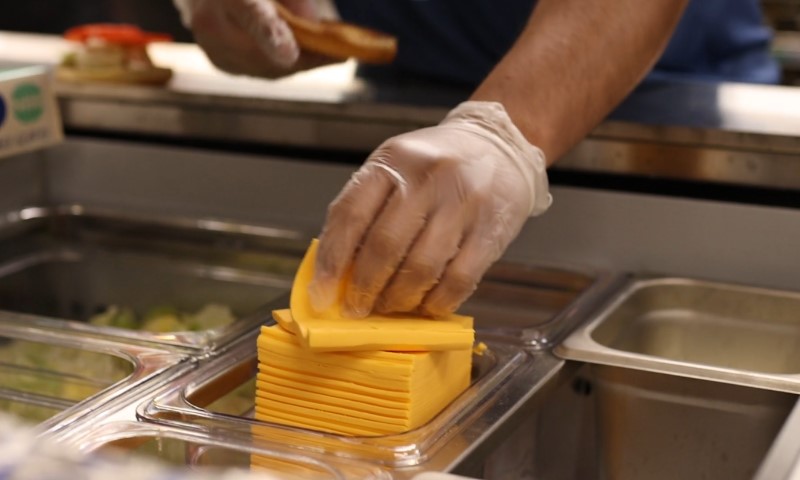Cheddar has more personalities than almost any other cheese. Some slices melt into silky sauces with barely a bubble, while others crumble with savory intensity before they even hit the heat.
The gap between “creamy” cheddar and “traditional” cheddar is not marketing fluff; it’s chemistry, craftsmanship, and intent.
Choosing the right one for a dish means reading labels like a cheesemaker and cooking with a sense of what structure, moisture, and age actually do in the pan.
What “Traditional Cheddar” Really Means

Two anchors define what people mean when they talk about traditional cheddar: a regulated composition and a historic making process.
The Legal Standard
In the United States, cheddar must meet a federal definition: at least 50 percent milkfat in dry matter and no more than 39 percent moisture. That balance is what gives cheddar its characteristic richness and dense body.
The rule also covers curing, which locks in the expected texture and prevents high-moisture shortcuts from blurring the line between natural and processed cheese.
The Historic Style
Traditional cheddar points back to the clothbound wheels of Somerset and Devon, now protected under the UK’s West Country Farmhouse Cheddar PDO. Each wheel is wrapped in cloth and aged in a cave or cool room for months, often nine or more.
That slow maturation dries the cheese, concentrates its flavor, and produces a crumbly interior shot through with savory, nutty, and slightly tangy notes. Many also develop tiny calcium lactate crystals that add crunch and depth.
Several American artisans, Beecher’s, Cabot Clothbound, Fiscalini, borrow that method, and their cheeses echo the same qualities: firm body, layered aroma, and long finish. Those traits tell you what “traditional” means in flavor and texture terms.
What “Creamy Cheddar” Means in Stores

Grocery cheddar labeled as “creamy” usually falls into two groups: young block cheddar with higher moisture or a richer “double cream” variant made with added cream. Both are designed for smooth melt and a mild, buttery flavor.
Young Block Cheddar
Younger cheddar, aged only a few weeks or months, keeps more moisture and less acid. The result is pliant, mild, and ready to melt. Its flavor leans toward butter and milk rather than umami or sharpness.
When a label says “creamy,” it typically means this younger block form, not a farmhouse wheel.
Double-Cream Cheddar
A smaller category uses extra cream during production. Adding cream raises the fat-in-dry-matter percentage, producing a richer mouthfeel and gentler melt.
You’ll often see this called “double cream cheddar.” It behaves more like a fusion between cheddar and brie in texture but keeps a cheddar-like taste.
Processed Creamy Cheddar
A few “creamy” products are technically processed cheese. They’re engineered to melt smoothly using emulsifying salts and stabilizers rather than natural moisture and pH.
If the ingredient label lists sodium phosphate or citrate along with milk solids, you’re in processed territory. That’s fine for convenience sauces but different from natural cheese performance.
To see how artisanal producers balance flavor and texture, take a look at September Farm’s creamy cheddar cheese selection, where the differences between young and aged batches are clearly noticeable.
The Science Behind How Cheddar Melts

Melt behavior comes down to four factors: moisture, proteolysis, calcium balance, and structure.
Moisture Content
Higher moisture spreads proteins apart, making it easier for heat to loosen the matrix. Creamy, young cheddar melts evenly and fast. Traditional clothbound, being drier, resists softening and may oil off unless handled gently.
Proteolysis and Age
As cheese ages, enzymes break protein chains into smaller pieces. That change gives older cheddar its crumbly texture and intense flavor but weakens elasticity. It’s why vintage cheddar can taste amazing but refuse to melt properly.
Calcium and pH
Calcium binds protein strands. When acidity rises during aging, calcium dissolves, changing how tightly the matrix holds.
A lower pH and different calcium balance can make the cheese more brittle or less cohesive when heated.
Structure and Processing
Natural cheddar, made with rennet, melts predictably within its moisture range. Processed cheddar melts perfectly because emulsifiers manage fat-water balance for you. That’s why nacho cheese never breaks while a natural cheddar sauce might.
Flavor Spectrum and Label Reality
Terms like mild, medium, sharp, or extra sharp have no federal definition. They’re marketing shorthand tied loosely to aging time, which varies by producer.
| Label Term | Approximate Age | Texture | Flavor |
| Mild | 2–3 months | Smooth, elastic | Buttery, soft |
| Medium | 4–6 months | Slightly firmer | Balanced tang |
| Sharp | 9–12 months | Crumbly | Tangy, rich |
| Extra Sharp / Vintage | 16+ months | Dry, brittle | Intense, nutty, savory |
A “sharp” cheddar from one brand might equal another’s “medium.” Always check the maker’s published aging data or best-by date for clues.
How to Use Creamy Cheddar
Creamy cheddar shines anywhere you want an easy, smooth melt and a gentle, buttery flavor that won’t dominate other ingredients.
Mac and Cheese
Use creamy or double-cream cheddar for a velvety sauce that coats pasta evenly. For an absolutely smooth texture, stabilize the sauce:
- Sodium citrate method: Dissolve a small pinch in warm milk, then whisk in grated cheddar. The citrate binds calcium and prevents separation.
- Cornstarch plus evaporated milk: Toss grated cheese with a teaspoon of cornstarch, warm evaporated milk until barely simmering, then add cheese gradually. It creates a stable emulsion without additives.
Burgers and Grilled Cheese
Thin slices of mild cheddar melt consistently over hot meat or bread. Its moisture content keeps it pliant, making it perfect for smashburgers or diner-style melts.
Quesadillas, Hot Dips, and Casseroles
Creamy cheddar stretches just enough for cheesy fillings and stays smooth in warm dips. For fundido or queso, mix in a little sodium citrate for professional-level silkiness that doesn’t break on the table.
How to Use Traditional Cheddar
Traditional cheddar brings layered flavor and structure. It’s about intensity and texture.
Cheese Boards and Pairings
Serve clothbound or farmhouse cheddar in chunks with crisp apples, chutneys, or coarse mustard. Its nutty depth stands up to strong condiments and dry ciders.
Potato Gratins and Savory Pies
Older cheddar adds bold, salty flavor and less moisture, perfect for baked dishes that need concentrated taste without sogginess. It grates cleanly and browns beautifully on top.
Biscuits, Scones, and Muffins
Fold finely grated traditional cheddar into dough for pockets of flavor that don’t overwhelm or weep fat. The dryness helps structure baked goods.
Finishing Touches
A fine microplane of aged cheddar over soup, roasted vegetables, or scrambled eggs adds high-impact aroma. A little goes a long way due to its concentrated composition.
Blending the Two Styles
Many chefs mix creamy and traditional cheddars to get the best of both worlds: smooth texture plus flavor depth.
In practical ratios, start with about 70 percent creamy cheddar and 30 percent aged. Adjust by taste or application. The blend performs well in most stove-top or baked preparations.
Technique Upgrades for Perfect Results

Stabilize Sauces
- Sodium citrate method: Use 1–2 percent sodium citrate by weight of the liquid base. Heat until simmering, whisk in grated cheese until silky. Reliable and repeatable.
- Cornstarch and evaporated milk method: Combine 1–2 teaspoons cornstarch per cup of milk, toss cheese with starch, then stir gradually into warm milk. Works best for mac and cheese or creamy soups.
Grating and Heating Tips
- Grate cheese finely to promote even, gentle melting.
- Use low heat and gradual incorporation to avoid curdling or oiling off.
- Add cheese off the boil, not in boiling liquid.
- Store cheese tightly wrapped to prevent moisture loss before cooking.
Choosing the Right Cheddar Quickly
| Dish or Use | Best Cheddar Type | Reason | Technique Tip |
| Mac and cheese (stovetop/baked) | Creamy or double-cream | High moisture, smooth melt | Sodium citrate or cornstarch method |
| Cheeseburgers, grilled cheese | Mild or medium creamy cheddar | Uniform slice melt | Cover pan briefly to steam-melt |
| Queso or nacho sauce | Creamy + sodium citrate | Velvety, scoopable sauce | Keep under simmer temp |
| Potato gratin | Traditional clothbound | Concentrated flavor | Pre-grate for even browning |
| Cheese boards | Traditional clothbound | Savory, complex | Serve at room temp |
| Savory muffins, biscuits | Traditional | Flavor impact, low moisture | Fine grate before folding |
| Soups or purees | Creamy + stabilizer | Smooth reheat | Stir constantly off heat |
| Kid-friendly casseroles | Creamy mild | Soft flavor, good stretch | Use pre-shredded or block grated |
| Finishing garnish | Aged traditional | Intense aroma | Microplane lightly |
How Age Affects Function in Cooking
- Mild to Medium: Best for creamy sauces, sandwiches, and general-purpose melts. Broader appeal for kids and lighter dishes.
- Sharp to Extra Sharp: Excellent for mature flavor, but handle carefully with heat. Works as a finisher, not a melter.
Reading Labels Like a Pro
| Label Cue | Meaning | Kitchen Use |
| “Clothbound,” “farmhouse,” “cave-aged,” “West Country PDO” | Traditional style, drier, complex | Boards, gratins, finishing |
| “Creamy,” “mild,” “young,” “double cream” | High moisture or fat, easy melt | Sauces, burgers, melts |
| “Sharp,” “extra sharp,” “vintage” | Long aging, crumbly texture | Grating, flavor booster |
| “Processed cheese,” “cheese product,” with emulsifiers | Melt-engineered | Fast dips or convenience melts |
Common Cheddar Problems and Fixes
| Problem | Likely Cause | Fix |
| Sauce split or oily | High heat or lack of stabilizer | Use sodium citrate or cornstarch mix, add cheese off heat |
| Cheese wouldn’t melt | Too dry or thick slice | Use younger cheddar, thin slice, cover pan briefly |
| Greasy grilled cheese | Fat separation from dry cheese | Lower heat, grate instead of stacking slices |
| Bland flavor in mac and cheese | Too mild or uniform cheese | Blend creamy and aged cheddar for balance |
Buying Smart
- Check the aging date: Many brands share age details online or on packaging. Longer aging equals sharper flavor and drier texture.
- Look for PDO markings: West Country Farmhouse Cheddar guarantees authenticity, region, and at least nine months of maturation.
- Inspect ingredients: Natural cheddar should list milk, salt, cultures, and enzymes. Added emulsifiers indicate processed versions.
- Store correctly: Keep blocks wrapped in wax paper inside airtight containers, not plastic alone. Airflow preserves rind while retaining moisture.
Why Moisture and Fat Matter More Than Marketing
Marketing adjectives like “creamy” and “sharp” matter less than two measurable numbers: moisture and fat in dry matter. Moisture drives melt. Fat drives mouthfeel.
Once you know that cheddar legally carries at least 50 percent milkfat in solids and no more than 39 percent moisture, you can roughly predict performance.
A lower moisture cheese is for grating and finishing; a higher one is for sauces and melts. Everything else is branding.
Shortcuts for Everyday Cooking
- For fast, silky cheese sauce: simmer milk with 1–2 percent sodium citrate, whisk in grated cheddar until smooth.
- For family bakes: mix 70 percent creamy cheddar with 30 percent sharp for texture and flavor.
- For serving: bring cheese to room temperature 30 minutes before eating to release aroma.
- For storage: rewrap clothbound cheddar in wax paper after each cut to let it breathe.
Bottom-Line Selection Rules
- Use creamy cheddar when you want cooperative melt, mild flavor, and child-friendly texture.
- Use traditional cheddar when you want concentrated savory notes, dry crumble, and mature character.
- When uncertain, blend both. Creamy gives structure, traditional gives soul. Stabilize sauces if long holding or reheating is expected.
Hi there, my name is Kelly Barlow and kellytoeat.com is my blog. Here, I write about various recipes I want to reccommend to readers.
I try to find the best possible recipes that can attract the attention of readers, and at the same time, I strive to write it in the most engaging manner possible.
When I was younger, I wanted to become a chef. Sadly, it wasn’t meant to be, but at the very least, I write about it.
